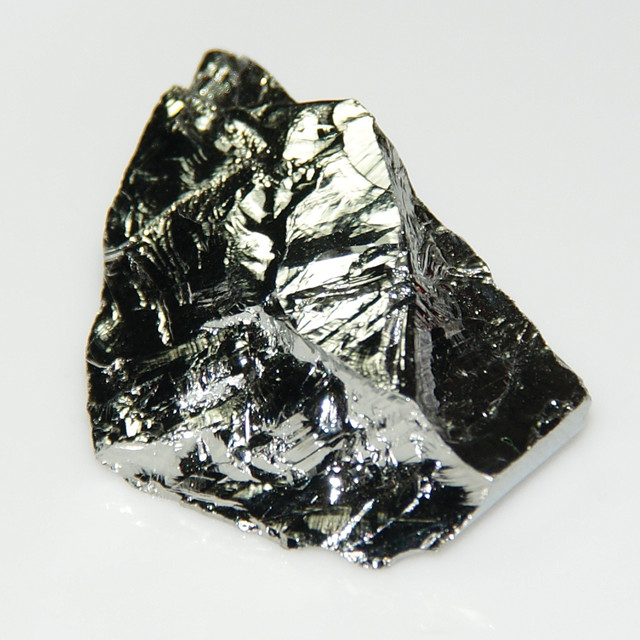
by U.S. Geological Survey Thursday, June 14, 2018
David E. Guberman, a mineral commodity specialist for the U.S. Geological Survey, compiled the following information on germanium, a metal used in everything from fiber-optic cable to solar applications.

Germanium is not found as a pure metal in nature but instead in common metallic ore minerals. Credit: ©Jurii, Creative Commons Attribution ShareAlike 3.0 Unported
Germanium is a grayish-white, hard, brittle element with electrical properties between those of a metal and an insulator. Germanium is metallic in appearance and is consumed as a pure metal or in compound form, depending on the application. Germanium is never found as a pure metal in nature, but trace amounts occur in many minerals, including common metallic ore minerals such as the zinc mineral sphalerite. Zinc smelters produce the majority of the world’s supply of germanium. Germanium is also recovered from fly ash produced by the burning of certain types of coal.
Germanium is primarily used as a component of the glass in fiber-optic cable, in infrared optics (night-vision) devices, as a polymerization catalyst for the production of polyethylene terephthalate (PET) beverage bottles, and as a semiconductor and substrate used in electronic and solar applications.
For fiber-optic cables, germanium is added to the pure silica glass core of the cable to increase its refractive index, minimizing signal loss over long distances. Global demand for fiber-optic cable has increased significantly in recent years as technological advances increase the bandwidth required to transmit and receive data. By March 2009, more than 15 million homes in North America had fiber optic cable running to the premises, compared with 180,000 homes in March 2004.
Germanium is transparent to part of the infrared spectrum, relatively strong and easily melded into lenses and windows for infrared optical devices, which are used extensively by military and law enforcement agencies for surveillance, reconnaissance and target acquisition applications. Infrared optical devices are also used for border patrol and by emergency response teams for conducting search-and-rescue operations.
Germanium is also used in multijunction solar cells, the highest-efficiency solar cells currently available. These multijunction cells are the preferred type for use in space-based solar power applications because of their high energy conversion efficiency and strength at minimal size. Terrestrial-based photovoltaic installations are a potential growth area for germanium usage, as are solar power plants that use concentrator technology comprised of lenses or mirrors that focus high concentrations of direct sunlight onto germanium-based multijunction solar cells. Germanium is also used in light-emitting diodes for backlighting liquid crystal display televisions and in vehicle headlights and taillights.
For more information on germanium and other mineral resources, visit http://minerals.usgs.gov/minerals.
World production of refined germanium was about 140,000 metric tons in 2008.
The leading sources of primary germanium from coal or zinc in 2008 were Canada, China, Finland and Russia.
The leading countries producing refined germanium metal or compounds in 2008 were Belgium, China, Finland, Germany, Russia and the United States.
Belgium, China, Japan and the United States were leading consumers of germanium in 2008.
German chemist Clemens Winkler first isolated germanium in 1886 and named it after his native country.
The first transistor was made from germanium. ' Germanium substrates were the base material for the solar panels used on NASA’s Mars Exploration Rovers. The two solar-powered robots were sent to explore the planet in April 2004 for a 90-day mission but were still functioning as of January 2010, in part due to the performance of their solar cells.
An alloy of silver and germanium is used to manufacture jewelry that is tarnish-resistant and extremely strong. Such jewelry has a greater silver content (97 percent) than sterling silver (92.5 percent).
© 2008-2021. All rights reserved. Any copying, redistribution or retransmission of any of the contents of this service without the expressed written permission of the American Geosciences Institute is expressly prohibited. Click here for all copyright requests.